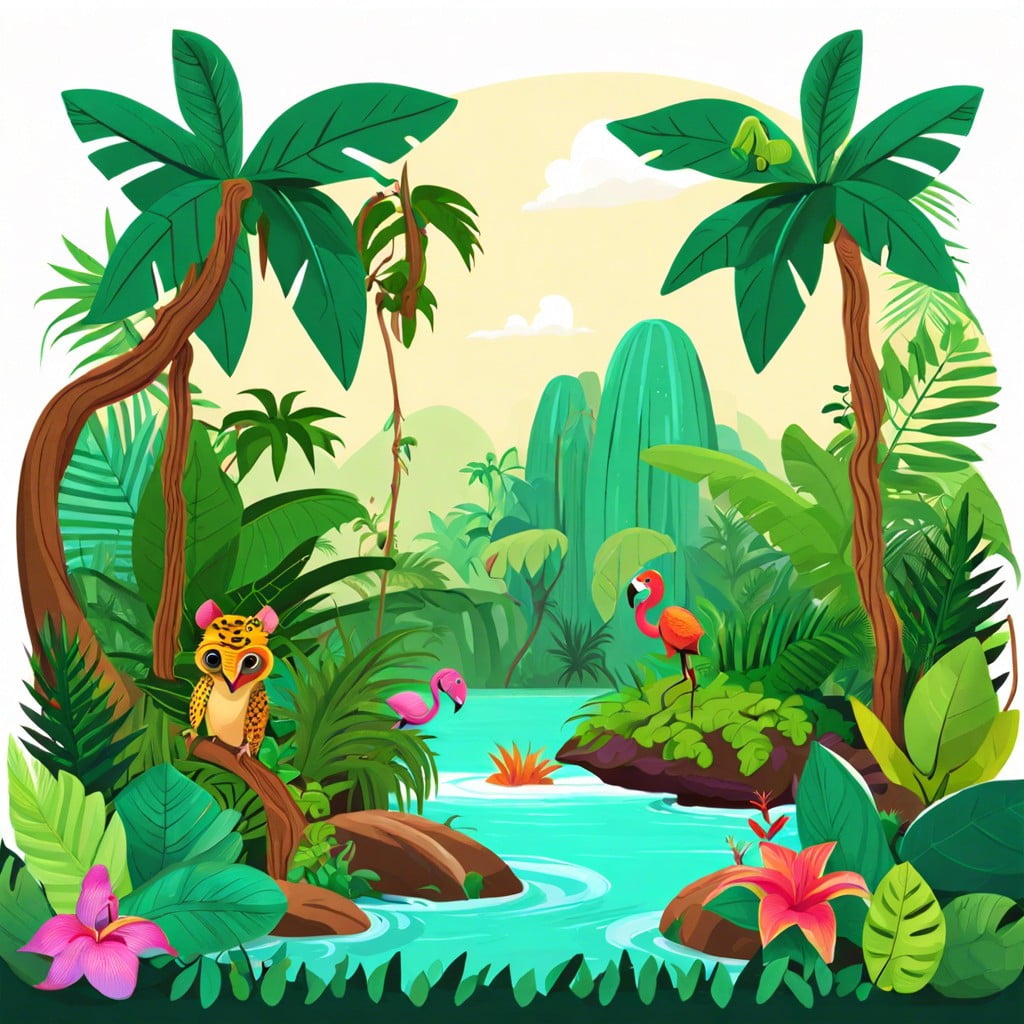Discover the incredible variety of terrestrial biomes on Earth, from sizzling deserts to frozen tundras.
Key takeaways:
- Tropical rainforests: Incredible biodiversity and constant rain.
- Deserts: Harsh conditions but teeming with resilient life.
- Temperate forests: Four distinct seasons, colorful foliage, and diverse wildlife.
- Taiga: Largest land biome with evergreen coniferous trees and cold winters.
- Arctic tundra: Frozen ground, hardy plants, and wildlife adaptations for survival.
Tropical Rainforests

Imagine a place where it rains cats and dogs, minus the cats and dogs. That’s your typical lush, humid, and bug-loving environment. These biomes are home to more species than you can name off the top of your head. We’re talking crazy biodiversity here.
Plants grow faster than weeds because of the constant warm temperature and endless rain. It’s like a botany party 24/7. Layers of vegetation create distinct ecological niches—forest floor, understory, canopy, and emergent layer. Each one has its own residents. Think of it as an apartment complex, but for trees and animals.
Speaking of animals, everything from brightly colored parrots to stealthy jaguars makes a cameo here. And, let’s not forget the insects. Millions of them, each one with its own job. And some weirder-looking than your uncle’s collection of mismatched socks.
Nutrient cycling is a big deal here—organic material decomposes quickly due to the damp conditions, making soil rich but surprisingly thin. That’s why trees have shallow but wide roots. They need to grab all the nutrients they can before it dissolves in the next downpour.
So, next time it rains, imagine yourself searching for shelter under these vast, verdant giants. Just don’t forget your umbrella—those leaves might look big, but they won’t keep you dry for long!
Deserts
Welcome to a land of extremes. Deserts are characterized by their lack of precipitation. Think dry, like really dry. We’re talking less than 250 mm of rain per year dry.
Despite their harsh conditions, deserts are teeming with life. Plants, like cacti and succulents, have adapted to store water for those rainless days. You won’t find lush gardens here, but you will find resilience.
Animals? Desert dwellers are the survivalists of the animal kingdom. With nocturnal habits and burrowing tendencies, they dodge the punishing sun like a pro. Ever heard of a camel? Their humps store fat, not water – common misconception busted!
Temperatures can swing from “I’m melting” during the day to “Brrrrr” at night. Layers, friends. Even desert animals know the value of a good thermal outfit.
So whether you’re imagining scorching sand dunes or rocky plateaus, deserts are anything but empty. A barren beauty, if you will.
Temperate Forests
And here we are, where the trees are polite enough to shed their leaves to prepare for winter. These biomes enjoy four distinct seasons – winter, spring, summer, and fall. It’s like nature’s version of a wardrobe change.
Inhabitants include deciduous trees like maples, oaks, and beeches; they put on a spectacular show of color-changing leaves in autumn. It’s a real pageant.
Critters galore! You’ll find deer, black bears, squirrels, and a birdwatcher’s dream with a variety of feathered friends. Don’t forget the industrious insects doing their part in the ecosystem!
The soil is rich and fertile, thanks to the leaf litter decomposing and adding nutrients. Farmers love it. That’s why you see a lot of agriculture happening around these biomes.
Rainfall is moderate – not too much, not too little. Goldilocks would approve. Summers are warm, winters are chilly, but nothing too extreme.
It’s just the right mix of flora, fauna, and fun for all!
Taiga
This biome is essentially the world’s largest land biome, stretching across North America, Europe, and Asia. Trees here are evergreen coniferous, equipped with needle-like leaves. Think pine, spruce, and fir. Picture lots of Christmas trees huddling together for warmth.
Winters? Brutally cold. Snow blankets the ground for much of the year. Summers, though short, are surprisingly warm, inviting various species to make the most of it.
Wildlife includes hardy animals like bears, wolves, and moose. And birds? Loads of them, migrating to warmer spots when winter hits, proving they’re smarter than the average squirrel.
Humans living here? They’re champions, adapting to the environment and utilizing its resources. Sustainable logging is common, but deforestation is a growing concern. Think of it as playing Jenga with trees; one wrong move and the tower tumbles.
Arctic Tundra
Cold, windy, and covered in snow—sounds like a cozy vacation spot, right? Nope, but it’s a wildlife wonderland. The ground stays frozen year-round. Crazy, but true.
Plants here are pros at survival. Think hardy shrubs, mosses, lichens—short, sweet, and tough as nails. Trees? Not a chance.
Animals work full-time jobs to stay warm. Polar bears, arctic foxes, and caribou strut their stuff in fur coats thicker than grandma’s winter blanket.
Only the bravest humans live here, mostly Inuit communities. They’ve got survival skills like you wouldn’t believe.
Sunlight is a hot commodity. Summer days are endless; winter nights last forever. Sunscreen and flashlights both necessary.